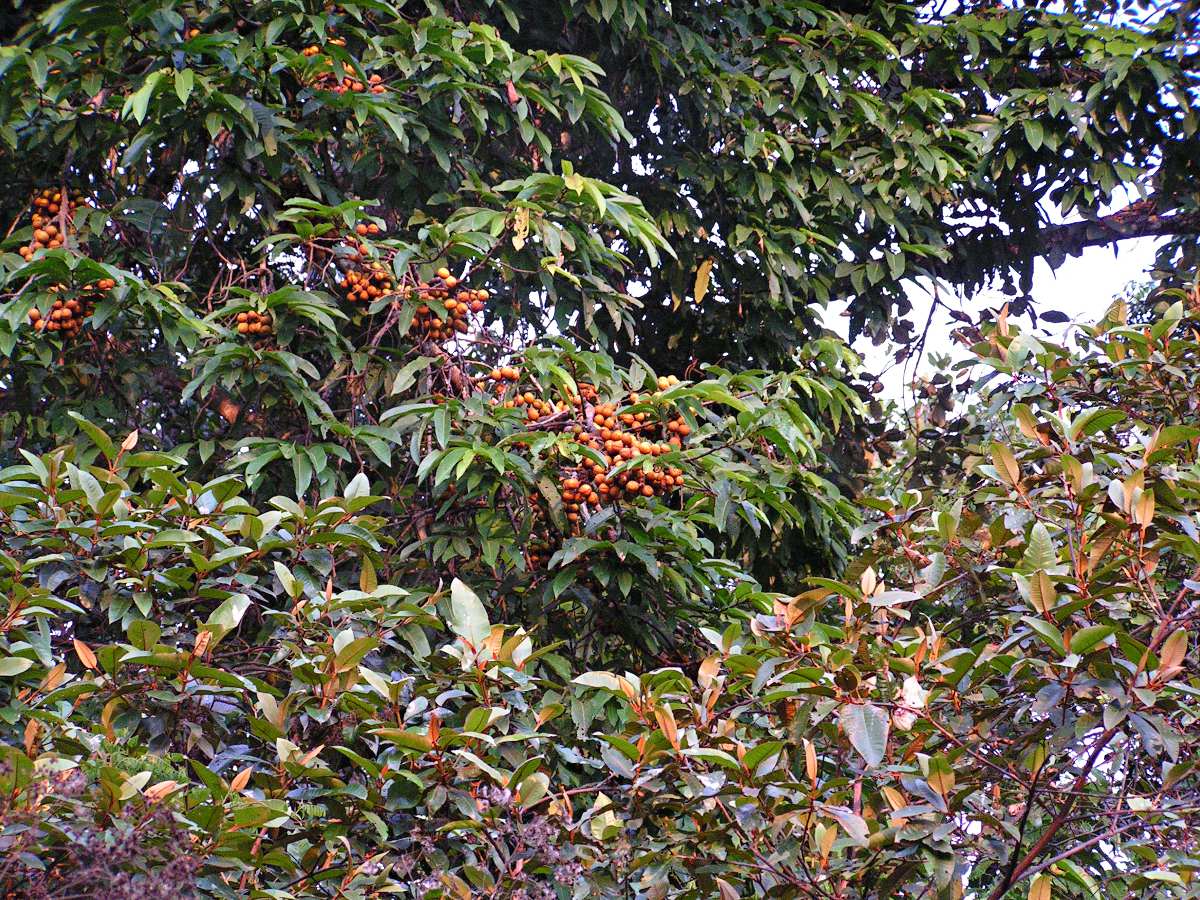Pycnanthus angolensis

|
|
Pycnanthus angolensis Common Names: African nutmeg, False nutmeg, Wild
nutmeg, Ilomba Scientific
Classification Kingdom: Plantae Clade: Tracheophytes Clade: Angiosperms Clade: Magnoliids Order: Magnoliales Family: Myristicaceae Genus: Pycnanthus Species: P. angolensis Binomial Name: Pycnanthus angolensis (Welw.) Warb. Synonyms: Pycnanthus microcephalus (Benth. & Hook.f.) Warb., Pycnanthus
schweinfurthii Warb., Pycnanthus kombo Warb. Morphological Description Pycnanthus angolensis, commonly known as African nutmeg or false nutmeg, is a large
evergreen tree typically growing to 25–35 m in height, with exceptional
specimens reaching 40 m, and a trunk diameter of 0.6–1.2 m. It is characterized
by: · Stem: Straight, cylindrical trunk with greyish to dark brown,
rough, fissured bark that exudes a reddish resin when cut · Leaves: Large, glossy, leathery, oblong to elliptic (15–30 cm long,
5–10 cm wide), dark green, alternate, with a prominent midrib · Flowers: Small, yellowish-green, fragrant, borne in axillary or
terminal panicles (5–15 cm long), unisexual, with male and female flowers on
separate trees · Fruit: Oval drupes (2–4 cm long), green turning reddish-brown when
ripe, containing a single, oily seed encased in a fleshy aril The tree’s glossy
foliage and aromatic seeds make it a distinctive species in tropical rainforests
(Keay, 1989). Distribution and Habitat Pycnanthus angolensis is native to tropical Africa, ranging from Senegal and
Sierra Leone in West Africa to Uganda, Tanzania, and Angola in Central and East
Africa. It thrives in: · Rainforests: Primary and secondary wet tropical forests with high
humidity (80–90%) and rainfall (1,500–3,000 mm annually) · Riverine Zones: Along rivers and streams, favoring deep,
fertile, well-drained soils · Lowland Forests: Elevations from sea level to 1,000 m,
intolerant of drought and prolonged dry seasons It prefers loamy or
clay-rich soils (pH 5.0–6.5) and temperatures of 24–32°C, often growing in
dense forest understories (Orwa et al., 2009). Ethnopharmacology Pycnanthus angolensis, commonly known as African nutmeg or "Ilomba," is a
tropical tree native to West and Central Africa. Various parts of the tree,
particularly the bark, have been traditionally used to treat a range of health
conditions, including skin infections, coughs, chest complaints, anemia,
leprosy, and as a potent purgative. Scientific studies have corroborated
several of these traditional uses, demonstrating that extracts from P. angolensis possess antibacterial,
antiparasitic, anti-inflammatory, analgesic, and antihemorrhagic properties.
Additionally, the plant has been employed as an antidote against poisons, in
the management of hyperglycemia, and in addressing female infertility. Its
efficacy is attributed to a rich phytochemical composition, including tannins
and flavonoids, which contribute to its antimicrobial and antioxidant
activities, supporting its use in treating intestinal disorders like dysentery
and diarrhea. Furthermore, P. angolensis has shown potential in managing
diabetes, cognitive disorders, cancer, osteoarthritis, and in promoting wound
healing. These findings underscore the therapeutic potential of Pycnanthus
angolensis, validating its extensive use in traditional medicine across its
native regions. · Antimicrobial: In Nigeria, stem bark decoctions treat bacterial infections.
he extracts and fractions of leaves elicited good anti-microbial activity
against Bacillus subtilis, Staphylococcus aureus and none against Escherichia
coli, Salmonella typhi and Klebsiella pneumoniae but gave minimal activity
against fungal isolates (Aspergilus niger and Candida albicans) (Oladimeji et
al., 2006). · Antimalarial: In Ghana, leaf infusions combat malaria. Dichloromethane
extracts show antiplasmodial activity against Plasmodium falciparum 3D7 strain (IC₅₀ 1.6 µg/mL), linked to
terpenoid quinones (Abrantes et al., 2008). · Analgesic: In Togo, bark extracts relieve toothache and headaches.
Ethanol extracts reduce acetic acid-induced writhing by 75.69% in mice at 150
mg/kg (Sofidiya, 2015). · Antiulcer: In Nigeria, bark decoctions treat ulcers. Extracts prevent ethanol-induced
gastric ulcers in rats by 60–80% at 150 mg/kg, attributed to tannins (Sofidiya,
2015). · Antioxidant: In Cameroon, seed oil manages diabetes. Extracts exhibit
DPPH scavenging (IC₅₀ 12 µg/mL), linked to kombic acid and phenolic compounds
(Achel et al., 2024). ⚠ Toxicity Profile: While generally safe in traditional doses (LD₅₀
> 5,000 mg/kg in rats), raw seeds contain cyanogenic glycosides (0.1–0.2
mg/g), potentially toxic if unprocessed. Bark tannins (10–15%) and
dihydroguaiaretic acid show non-selective cytotoxicity against tumor cells
(CC₅₀ 20 µg/mL), necessitating careful use (Achel et al., 2024). Phytochemistry The plant’s medicinal
potency is driven by its rich phytochemical profile: · Lignans: Dihydroguaiaretic acid (0.05–0.1%), heliobuphthalmin, with
antimicrobial and antioxidant effects · Terpenoids: Kombic acid, pycnanthuquinone A/B (0.1–0.3%), linked to
antimalarial activity · Phenolics: Gallic acid, catechins (0.2–0.5%), enhancing antiulcer
properties · Fatty Acids: Myristic acid (50–60% in seed oil), supporting kombo butter
production Over 50 compounds,
identified via HPLC and GC-MS, highlight its therapeutic potential (Achel et
al., 2024). Additional Uses · Culinary/Industrial: Seeds produce kombo butter (fat content
60–70%), used in soaps, candles, and as fuel · Agroforestry: Provides shade for cocoa, coffee, and banana plantations,
enhancing soil nitrogen (Orwa et al., 2009) · Cultural: Bark and seeds used in Gabonese rituals as a “holy tree”
symbol · Economic: Timber for construction and furniture due to its durability References
External Links More Pictures |
|
| Compounds of Pycnanthus angolensis | |
| References |